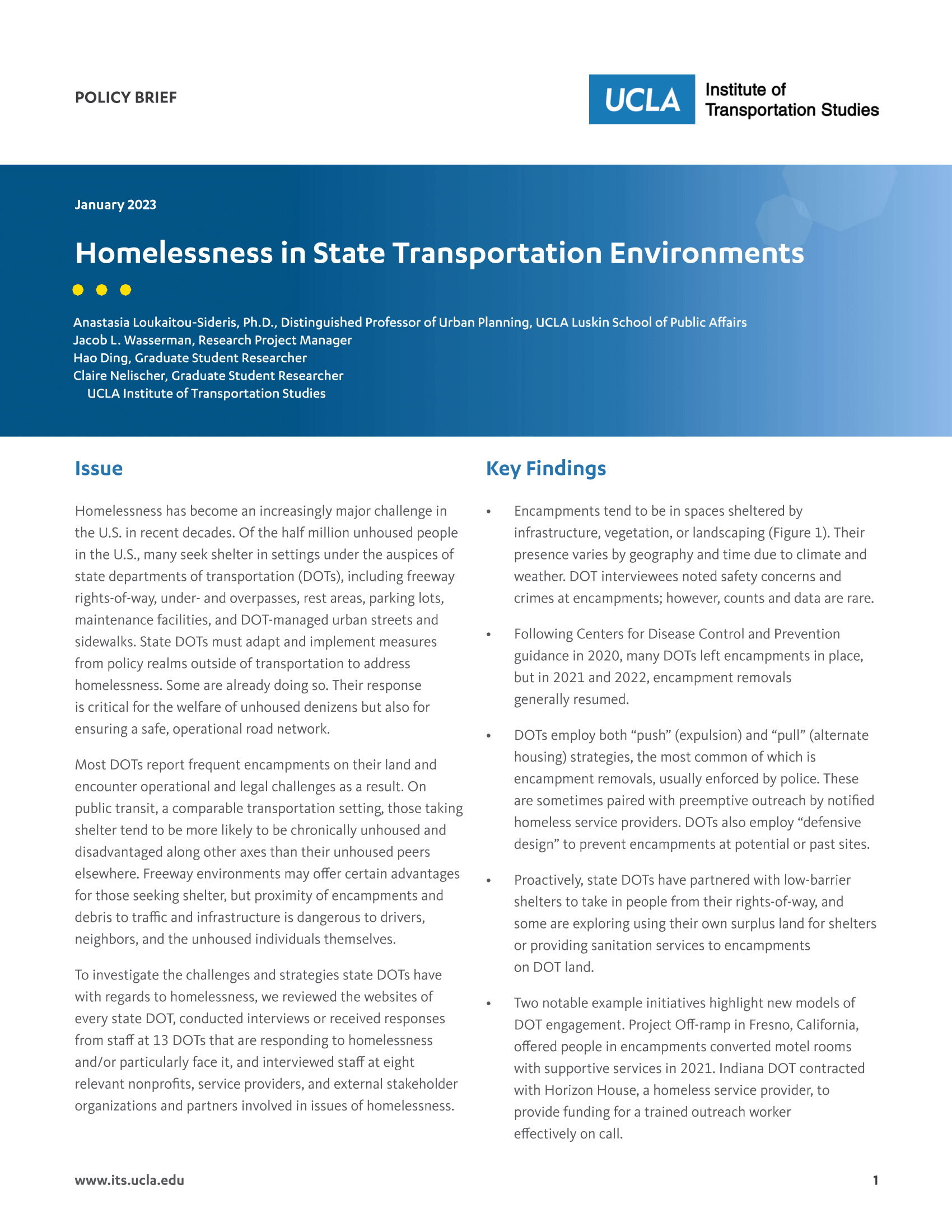Date: January 31, 2023
Author(s): Anastasia Loukaitou-Sideris, Jacob L. Wasserman, Hao Ding, Claire Nelischer
Abstract
Homelessness has become an increasingly major challenge in the U.S. in recent decades. Of the half million unhoused people in the U.S., many seek shelter in settings under the auspices of state departments of transportation (DOTs), including freeway rights-of-way, under- and overpasses, rest areas, parking lots, maintenance facilities, and DOT-managed urban streets and sidewalks. State DOTs must adapt and implement measures from policy realms outside of transportation to address homelessness. Some are already doing so. Their response is critical for the welfare of unhoused denizens but also for ensuring a safe, operational road network.
About the Project
In recent decades, homelessness has become an increasingly major challenge in the U.S. Of the half million unhoused people in the U.S., many seek shelter in settings under the auspices of state departments of transportation (DOTs), such as freeways, underpasses, and rest areas. This project synthesizes existing literature and findings from interviews with staff from state DOTs, service providers, and organizations responding to homelessness. Homelessness represents a recognized and common challenge for DOTs, but the numbers and location of unhoused individuals in state transportation settings vary and fluctuate. As DOTs face jurisdictional, financial, and legal hurdles in responding, DOT staff employ both “push” and “pull” strategies, the most common of which is encampment removals. However, the effectiveness of such removals is limited. Other strategies include “defensive design” and, more proactively, establishing or partnering with low-barrier shelters, providing shelters and sanitation on DOT land, and coordinating rehousing and outreach efforts. The findings suggest that DOTs should acquire better data on homelessness on their lands, create a homelessness coordinating office, establish formal partnerships with nonprofits/service providers, and evaluate the necessity of encampment removals, through the development and utilization of prioritization criteria.


